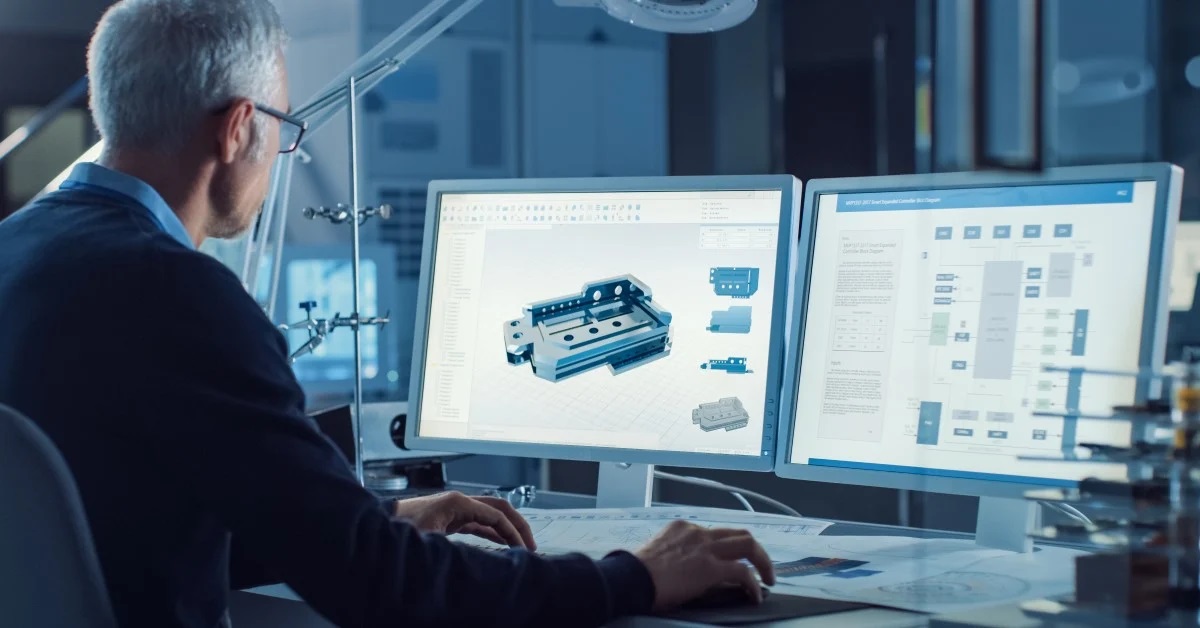
The Definitive Guide to Choosing the Best Thermal Detector for Your Needs
Key Takeaways:
- Thermal detectors detect and measure temperature distribution
- They use infrared radiation and microbolometer technology
- Thermal detectors are important in industrial maintenance, medical diagnostics, and energy efficiency
- Advantages of thermal detectors include non-contact operation, real-time imaging, and high sensitivity
- When choosing a thermal detector, consider accuracy, temperature range, and specific application needs
- Types of thermal detectors include infrared detectors and thermal imaging detectors
- Considerations for choosing the best thermal detector include requirements, reviews, and support/warranty options
Understanding Thermal Detectors and Their Importance
Thermal detector is sophisticated devices that are designed to detect and measure the distribution of temperature in a given area. They use various technologies to capture and interpret thermal energy, allowing users to identify hotspots, temperature variations, and even changes in heat patterns. Understanding the basics of thermal detectors and how they work is essential for anyone looking to choose the right device for their specific needs.
What Are Thermal Detectors and How Do They Work?
Thermal detectors, also known as thermal imaging cameras or thermographic cameras, operate based on the principles of infrared radiation. They are equipped with sensors that can detect and measure the intensity of thermal energy emitted by objects or living organisms. These sensors convert the detected infrared radiation into visible images, allowing users to see and analyze the temperature distribution within a given field of view.
The key component of thermal detectors is the microbolometer, a tiny sensor that can detect and measure the temperature of objects by measuring changes in electrical resistance. When an object emits infrared radiation, this radiation is absorbed by the microbolometer, causing a change in resistance that is detected and converted into an electrical signal. This signal is then processed and displayed as a thermal image on the screen of the thermal detector.
The Importance of Using Thermal Detectors in Various Applications
Thermal detectors have gained significant importance in various fields due to their ability to provide valuable insights into temperature distribution and variations. In industrial applications, thermal detectors are used for preventive maintenance, allowing technicians to identify potential electrical or mechanical issues by detecting hotspots or abnormal temperature levels. This helps to avoid costly breakdowns and optimize the performance of machinery and equipment.
In the medical field, thermal detectors are used for diagnostic purposes, as they can help identify abnormal temperature patterns in the human body. For example, in dermatology, thermal detectors can be used to detect skin abnormalities or monitor the progression of diseases such as cancer. In the veterinary field, thermal detectors can aid in the detection and diagnosis of injuries or illnesses in animals.
Thermal detectors also have applications in the field of building diagnostics and energy efficiency. By identifying areas of heat loss or air leakage, thermal detectors can help optimize energy consumption and reduce heating or cooling costs. They are also used in the field of firefighting to identify hidden hotspots or smoldering fires.
The Advantages of Thermal Detectors over Other Detection Systems
Thermal detectors offer several advantages over other detection systems, making them a preferred choice in many applications. One of the main advantages is their ability to detect temperature variations and anomalies without direct contact with the object or subject being measured. This non-contact feature makes thermal detectors safe, convenient, and versatile.
In addition, thermal detectors can provide real-time imaging, allowing users to visualize temperature distribution and changes instantly. This makes them invaluable in situations where quick decision making is necessary, such as in industrial processes or emergency response scenarios. Thermal detectors can also operate in complete darkness or through fog, smoke, or other obscurants, further enhancing their usefulness in challenging environments.
Furthermore, thermal detectors offer a wide temperature measurement range and high sensitivity, allowing them to detect even small temperature variations. This makes them precise and reliable instruments for detecting thermal abnormalities in a variety of applications.
Factors to Consider When Choosing the Right Thermal Detector
Choosing the right thermal detector can be a daunting task, considering the wide range of options available in the market. To ensure you select the most suitable detector for your needs, it is important to consider the following factors:
Accuracy and Sensitivity: Crucial Considerations for Thermal Detectors
One of the most important factors to consider when choosing a thermal detector is its accuracy and sensitivity. The accuracy of a thermal detector refers to its ability to provide temperature measurements that are close to the true values. A highly accurate detector is essential, especially in applications where precise temperature measurements are required, such as medical diagnostics or scientific research.
Sensitivity, on the other hand, refers to the smallest temperature difference that a detector can detect. A more sensitive detector can detect smaller temperature variations, making it more suitable for applications where subtle changes in temperature need to be identified.
When comparing different thermal detectors, it is important to look for specifications that indicate the accuracy and sensitivity of the device. These specifications are typically provided by the manufacturer and can help you make an informed decision.
Understanding Different Temperature Ranges and Their Impact on Detection
Thermal detectors have different temperature measurement ranges, and it is important to choose a detector that is suitable for your specific application. Some thermal detectors have a wide temperature range, while others are designed for specific temperature ranges.
For example, if you are using a thermal detector for industrial applications where high temperatures are expected, such as in metalworking or glass manufacturing, you need a detector that can measure temperatures in the range of hundreds or even thousands of degrees Celsius. On the other hand, if you are using a thermal detector for medical applications, a lower temperature range might be sufficient.
It is crucial to consider the temperature range of the objects or subjects you will be measuring and choose a thermal detector that can accurately measure temperatures within that range. Using a detector with a limited temperature range may result in inaccurate measurements or even damage to the device.
Considerations for Specific Applications: Industrial, Medical, and Biological
Different applications have different requirements when it comes to thermal detectors. It is important to consider the specific needs of your application and choose a detector that is tailored to meet those needs.
In industrial applications, for example, durability and resistance to harsh environments may be important factors to consider. Industrial settings often involve high temperatures, exposure to dust or chemicals, and demanding operating conditions. Choosing a thermal detector that is designed to withstand these conditions is crucial.
In medical applications, on the other hand, factors such as resolution and image quality may be more important. Medical professionals rely on clear and detailed thermal images to make accurate diagnoses. Therefore, choosing a thermal detector with high resolution and superior image quality can greatly enhance the effectiveness of the device in medical settings.
Biological applications, such as wildlife research or ecological studies, may have unique requirements as well. In these applications, factors like portability, ease of use, and the ability to capture images in real-time may be critical.
Comparing Different Types of Thermal Detectors
There are various types of thermal detectors available in the market, each offering its own set of advantages and limitations. Understanding the differences between these types can help you make an informed decision when choosing a thermal detector.
Exploring the Differences Between Infrared and Thermal Imaging Detectors
Two commonly used types of thermal detectors are infrared detectors and thermal imaging detectors. While both are based on the principles of infrared radiation, there are some key differences between them.
Infrared detectors are typically single-point detectors that measure the temperature at a specific spot. They provide a numerical temperature reading, allowing users to gather precise temperature data. However, they do not provide a visual representation of the temperature distribution.
Thermal imaging detectors, on the other hand, provide a visual representation of the temperature distribution within a given field of view. They use an array of sensors to capture temperature data across a wide area, creating a thermal image or thermogram. This allows users to easily identify hotspots or temperature variations within the scene.
When choosing between infrared detectors and thermal imaging detectors, it is important to consider the specific requirements of your application. If you need precise temperature measurements at specific points, an infrared detector may be more suitable. However, if you need to visualize and analyze temperature distribution over a larger area, a thermal imaging detector would be a better choice.
Understanding the Pros and Cons of Contact and Non-Contact Thermal Detectors
Thermal detectors can be categorized as either contact or non-contact detectors, depending on how they interact with the objects or subjects being measured.
Contact thermal detectors require direct contact with the object or subject to measure its temperature. They typically use a thermocouple or a temperature probe to make physical contact and collect temperature data. Contact detectors can provide highly accurate temperature measurements when used correctly, but they may not be suitable for certain applications where non-contact measurements are required, such as in electrical or mechanical inspections.
Non-contact thermal detectors, as the name suggests, can measure temperature without direct contact with the object or subject. They use infrared technology to detect and capture thermal energy emitted by the target. This non-contact feature makes them convenient and versatile, allowing temperature measurements to be taken from a safe distance.
When deciding between contact and non-contact thermal detectors, consider the nature of your application and the feasibility of making direct contact with the objects or subjects. If direct contact is not possible or undesirable, a non-contact thermal detector would be the better choice.
Comparing Thermal Detectors Based on Their Technology and Features
Thermal detectors can vary in terms of the technology and features they offer. Some detectors may have additional features that enhance their functionality and usability.
For example, some thermal detectors offer adjustable emissivity settings, which allow users to adjust the device’s sensitivity to different types of surfaces. This can be particularly useful in applications where the target has a low emissivity, such as shiny or reflective objects.
Other detectors may offer advanced image processing capabilities, allowing users to enhance or analyze thermal images in more detail. This can be helpful in identifying specific thermal patterns or anomalies.
When comparing different thermal detectors, consider the specific features that are important for your application. Look for detectors that offer the necessary technology and features to meet your requirements.
Choosing the Best Thermal Detector for Your Needs
Now that you have a better understanding of thermal detectors and the various factors to consider, it’s time to choose the best detector for your needs. To make the right choice, consider the following:
Key Considerations for Selecting the Right Thermal Detector
Start by identifying your specific requirements and priorities. What are the main purposes for which you will be using the thermal detector? Is accuracy more important than sensitivity, or vice versa? Consider the temperature range of the objects or subjects you will be measuring. Are there any specific features or functionalities that are vital for your application?
Next, do thorough research on different brands and models of thermal detectors. Read customer reviews and recommendations to get a sense of the performance and reliability of each device. Look for reputable manufacturers who have a track record of producing high-quality thermal detectors.
Exploring Different Brands and Models: Reviews and Recommendations
It is always helpful to hear from other users who have firsthand experience with a particular thermal detector. Look for online forums or discussion boards where professionals in your field discuss their experiences with different brands and models. Pay attention to any recurring themes or issues that arise in these conversations.
You can also consult industry experts or colleagues who have expertise in thermal detection. They may be able to provide valuable insights and recommendations based on their own experience.
Factors to Consider Beyond Price: Support, Warranty, and Customization Options
While price is certainly an important factor when choosing a thermal detector, it should not be the sole determining factor. Consider other factors such as customer support, warranty, and customization options offered by the manufacturer.
Having access to reliable customer support can make a significant difference in case you encounter any issues or need assistance with your thermal detector. A comprehensive warranty can provide peace of mind and protect your investment.
Customization options, such as the ability to calibrate the detector for specific applications or to integrate it with other systems, can also be valuable features to consider.
By considering all these factors and doing thorough research, you can ensure that you choose the best thermal detector for your specific needs.
FAQ
Question: What are thermal detectors and how do they work? – Thermal detectors, also known as thermal imaging cameras or thermographic cameras, operate based on the principles of infrared radiation. They are equipped with sensors that can detect and measure the intensity of thermal energy emitted by objects or living organisms. These sensors convert the detected infrared radiation into visible images, allowing users to see and analyze the temperature distribution within a given field of view.
Question: What are the advantages of thermal detectors over other detection systems? – Thermal detectors offer several advantages over other detection systems, making them a preferred choice in many applications. One of the main advantages is their ability to detect temperature variations and anomalies without direct contact with the object or subject being measured. This non-contact feature makes thermal detectors safe, convenient, and versatile. Additionally, thermal detectors can provide real-time imaging, operate in complete darkness or through obscurants, and offer a wide temperature measurement range and high sensitivity.
Question: What factors should be considered when choosing a thermal detector? – When choosing a thermal detector, it is important to consider factors such as accuracy, sensitivity, temperature range, and specific application needs. The accuracy of a thermal detector refers to its ability to provide temperature measurements close to the true values, while sensitivity refers to the smallest temperature difference that a detector can detect. The temperature range of the detector should match the range of temperatures expected in the objects or subjects being measured. Furthermore, considering the specific requirements of the application, such as durability for industrial settings or resolution and image quality for medical settings, is crucial.
Question: What are the differences between infrared detectors and thermal imaging detectors? – Infrared detectors are single-point detectors that provide a numerical temperature reading, while thermal imaging detectors provide a visual representation of the temperature distribution within a given field of view. Infrared detectors are more suitable for applications that require precise temperature measurements at specific points, while thermal imaging detectors are better for visualizing and analyzing temperature distribution over a larger area.
Question: What are the differences between contact and non-contact thermal detectors? – Contact thermal detectors require direct physical contact with the object or subject being measured, while non-contact thermal detectors can measure temperature without direct contact. Contact detectors provide highly accurate temperature measurements but may not be suitable for applications where non-contact measurements are required. Non-contact detectors use infrared technology and allow temperature measurements to be taken from a safe distance.
Question: What are some additional features to consider when comparing thermal detectors? – Some thermal detectors offer adjustable emissivity settings to adjust the device’s sensitivity to different types of surfaces. Other detectors may have advanced image processing capabilities for enhancing or analyzing thermal images. When comparing thermal detectors, consider the specific features that are important for your application and look for detectors that offer the necessary technology and features to meet your requirements.
Question: How can I choose the best thermal detector for my needs? – To choose the best thermal detector for your needs, start by identifying your specific requirements and priorities. Consider the main purposes for which you will be using the detector, the temperature range of the objects or subjects you will be measuring, and any specific features or functionalities that are vital for your application. Do thorough research on different brands and models, read customer reviews and recommendations, and consult industry experts or colleagues. Consider factors beyond price, such as customer support, warranty, and customization options, to make an informed decision.
Question: Are there any specific recommendations for brands or models of thermal detectors? – It is always helpful to hear from other users who have firsthand experience with a particular thermal detector. Look for online forums or discussion boards where professionals in your field discuss their experiences with different brands and models. Additionally, consult industry experts or colleagues who have expertise in thermal detection. They may be able to provide valuable insights and recommendations based on their own experience.
Useful Resources
- FLIR – FLIR is a leading manufacturer of thermal detectors and offers a wide range of products for various applications.
- Fluke – Fluke is another reputable manufacturer of thermal detectors, known for their accuracy and reliability.
- Keysight – Keysight offers advanced thermal detectors with high resolution and image quality, ideal for medical applications.
- Thermo Fisher Scientific – Thermo Fisher Scientific provides thermal detectors for industrial applications, designed to withstand harsh environments.
- Physical Store – Physical Store offers a variety of thermal detectors from different brands, with customer reviews and recommendations.
- Thermal Camera Experts – Thermal Camera Experts provides in-depth information on thermal detectors and guides to help you choose the right one for your needs.
- ResearchGate – ResearchGate is an online platform where professionals share their expertise and experiences with thermal detectors in various fields.
- Reddit – Reddit has active communities discussing thermal detectors and sharing insights based on personal experiences.

